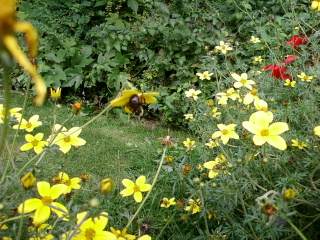Lagoa d' Obidos, Portugal
A Lagoa de Óbidos
In a natural way, the Óbidos lagoon, such as coastal lagoons in the medium or long term, would become swamps to settle his regime remained. However, human intervention accelerates the process of silting of attraction you see that causes constant changes in the watersheds that lead to an increased production of sediment. On the other hand, the population tries to reverse the situation by intervening through dredging carried out in order to increase the depth of the system, extending thus the life of these aquatic environments. It has a total area of approximately 6.9 km2 and an average depth of two meters, with elevations ranging from two feet to five feet. Estende-se para montante essencialmente por dois canais, para Oeste pelo Braço do Bom Sucesso, e para Este pelo Braço da Barrosa. It extends upstream for two main channels for the West Arm of Good Success, and The Arm of the Barrosa. Lagoa de Óbidos is the land border with the municipality of Caldas da Rainha to the north (the parishes of Foz do Arelho and Nadadouro) and the county south of Obidos (parishes of St. Mary and Ford).
Vila de Obidos
Vila de Obidos
Óbidos
Moorish castle.
After the
fall of Rome, came under the influence of the
Visigoths, although specific records are missing. The Roman town of
Eburobrittium was abandoned in the 5th century for the more secure hilltop where today the principal settlement located. Sometime after 713 the
Moors established a fortification on this mountain, while a Christian community of
Mozarabs lived in the
Moncharro neighbourhood.
The area was
taken from the Moors by the first King of Portugal,
Afonso Henriques, in 1148. Tradition states that one knight, Gonçalo Mendes da Maia, was responsible for the successful storming of the
Moorish castle.
The retaking of Óbidos was a final stage in the
conquest of the
Estremadura region, after the settlements of
Santarém,
Lisbon and
Torres Vedras. Following the control of the region, the settlement received its first
foral (
English:
charter) in 1195, during the reign of
Sancho I. In 1210,
King Afonso II gave the title of this village to Queen Urraca. Since then, Óbidos has often been patronized by the Queens of Portugal, giving rise to its informal title as
Vila das Rainhas (
English:
town of the Queens); several royal consorts enriched the village with donations from the
Middle Ages until the 16th century.The castle and walls of Óbidos were remodelled during the reign of King
Dinis I.
[1] The limestone and marble structure was strengthened and elaborated, while the
keep was created in the 14th century, by King
Fernando. By the time of the first remodelling project, the settlement had also grown beyond the gates of the castle.The Church of Santa Maria in Óbidos was the setting for the wedding of King
Afonso V to his cousin, Princess
Isabella of Coimbra, on 15 August 1441, when they were both still children aged 9 and 10, respectively.
Sao Pedro de Moel Beach, Portugal


























